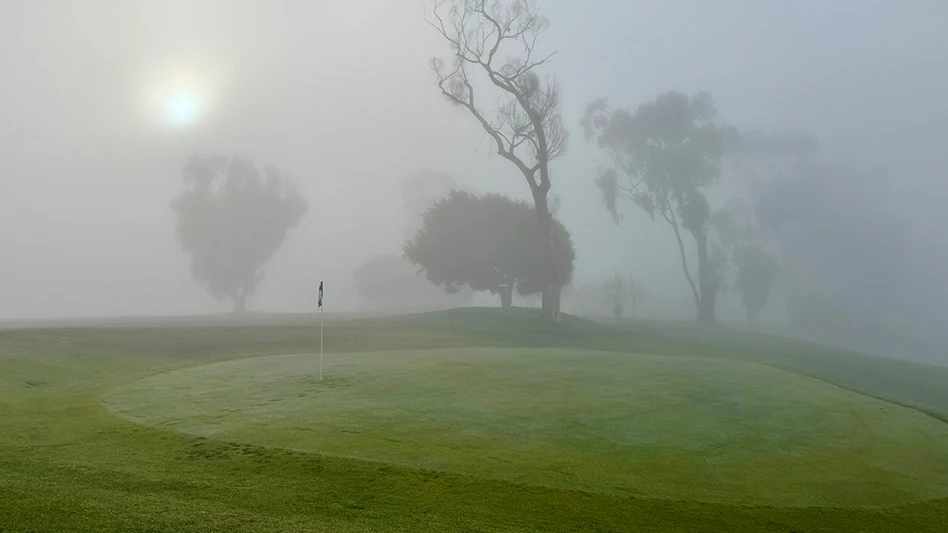As The First Tee prepared for its third annual golf tournament, it’s been looking forward to its 10-year milestone and more growth.
The organization was an initiative of the World Golf Foundation, headed by WGF chairman and PGA Tour commissioner Timothy Finchen, and has reached more than more than 1 million youth through its various programs in its nine years in existence.
From Sept. 1-3, 78 of the program’s participants played with professionals in the Wal-Mart First Tee Open, which is an official Champions Tour event. The juniors in the event have been brought up through The First Tee program and competed in qualifying rounds to get to the tournament, which was held at Pebble Beach Golf Links.
The First Tee is designed to involve youth who wouldn’t normally have access to the game of golf and, in the process, instill values that will help transform them into responsible adults.
The First Tee facilities follow a life skills curriculum. The first program a child enrolls in is called Target. In this stage, youngsters are introduced to the game in a condensed setting. This lasts two to four days.
Participants then enroll in a more structured life skills curriculum, which includes Par, Birdie, Eagle and Ace levels. They learn life skills as they learn golf grip stance and posture, rules and etiquette.
“We don’t say, ‘Let’s go learn about golf,’ and ‘Let’s go learn about life skills.’ We teach confidence on the putting green when they’re learning to line up a shot,” says Joe Louis Barrow, Jr., executive director of The First Tee.
“We teach goal-setting while they’re golfing. That level of specificity about how you get from A to Z is important in all aspects of life, and we see them using it.”
For example, Barrow says the organization has seen participants’ relationships with their siblings improve because the program instills in them a higher level of respect.
“We did a study at the University of Virginia and received this anecdotal comment: One boy said he doesn’t get upset anymore when the person at McDonald’s leaves off the tomato from his burger. He realizes the person might just be having tough day,” Barrow says. “That’s the kind of emotional management we teach, and we’re very emphatic about it.”
Young aspiring golfers learn these lessons at facilities that were created just for them.
“Junior golfers don’t have the priorities to support when they want to play,” Barrow says. “So we wanted to change that paradigm.”
When Barrow joined The First Tee in 2000, it had about 20 facilities. Today there are more than 100 golf-learning facilities, where the participants have priority to play the courses.
Currently, there are 205 chapters and 255 facilities in 47 states and five international locations. And 675,000 young people have partipated in The First Tee programs through its facilities.
There’s also the school program, which has reached another 400,000 juniors. The elementary school-based program is in about 50 communities. The idea is that if children aren’t able to make it to The First Tee facilities, the organization comes to them.
“We created a mandatory two-week physical education setting a year or so ago,” Barrow says. “This is on par with other sports being introduced. Physical education teachers are teaching it, and they love it. They’re happy to be able to teach the values of golf. There’s a level of courtesy, perseverance and integrity.”
The First Tee seems to have the full support of the golf industry.
“Right from the start, it immediately transformed into an industry initiative,” Barrow says.
Augusta National Golf Club, LPGA, PGA, PGA Tour and the U.S. Golf Association jumped on board. The organizations all have members on the oversight committee and make up the World Golf Foundation’s board of directors.
Not only do the golfer organizations back the organization, but the Golf Course Superintendents Association of America also plays a supporting role. The superintendents are engaged in The First Tee, Barrow says, adding that The First Tee made it a point to align with the GCSAA early on.
Some superintendents have a close link to the organization. Those who work at The First Tee courses have the responsibility of making sure the golf experience is what it should be for the young golfers, Barrow says.
“Some superintendents participate in chapters and share with young people the possibility of careers in golf course management,” he says.
Next year, The First Tee celebrates its 10th anniversary, and the organization expects to keep up the momentum. Earlier this year, the organization announced the goals for its Phase III business plan, which runs through 2010.
The objectives include:
• Introduce golf and The First Tee nine core values to 3.5 million young people;
• Deliver a consistent life skills experience at each facility;
• Grow The First Tee National school program to 140 communities throughout the country; and
• Establish a chapter in each of the 50 United States and have operations in 90 percent of the top 100 markets.
Barrow says the program wouldn’t exist if it didn’t have partnerships with communities. Ninety percent of the grounds are made available through use agreements with municipalities. In exchange, The First Tee improves the parcel of ground by putting three-, six- or nine-hole courses there.
Golf has been known to be a sport for affluent white men, and The First Tee wants to change that, inviting youth from all demographics to participate. Barrow is proud of the fact that 34 percent of all First Tee participants are female, compared to 25 percent in all of golf.
Because the program aims make the game more accessible to all youth, there was a perception that the program was for inner city kids in urban areas. Barrow says 50 percent of the participants come from diverse backgrounds.
“Golf is taking a whole different place in communities than we’ve previously seen,” Barrow says.
There actually are urban, suburban and rural settings that make up the backdrops for the program. It’s not so much that there is diversity from ethnic standpoint, but rather from an economic standpoint.
Barrow has been surprised by the wide age range the program attracts.
“We recommend children ages 8 through 18 join, but 25 percent of the participants are ages 5 to 8,” Barrow says. “It really puts golf on the same plane as football and little league baseball.”
He attributes some of the rising interest in golf to what he calls the “Tiger effect.”
“Tiger Woods makes golf more appealing to broader segment of society,” he says. “Not just for kids, but adults as well. A lot of people watch golf because they like to see Tiger, and he’s entertaining. He opened people’s minds to the game.”
While none of the current First Tee graduates are going on to be professional golfers, Barrow says they’ve been turned on to possibilities some haven’t thought about before, including college.
“If we expose them to the values associated with The First Tee, they’ll become exposed to the values associated with the game of golf,” he says. “We’ll help them experience the game of golf and give them foundations to be successful in life.” GCN
The First Tee
• Is headquartered in World Golf Village, St. Augustine, Fla.
• Has reached 675,000 young people
• Has 205 chapters and 255 facilities
• Is located in 47 states and five international locations
Its nine core values are:
1. Honesty
2. Integrity
3. Sportsmanship
4. Respect
5. Confidence
6. Responsibility
7. Perseverance
8. Courtesy
9. Judgment
Get curated news on YOUR industry.
Enter your email to receive our newsletters.
Explore the September 2006 Issue
Check out more from this issue and find your next story to read.
Latest from Golf Course Industry
- Beyond the Page 65: New faces on the back page
- From the publisher’s pen: New? No way!
- Indiana course upgrades range with synthetic ‘bunkers’
- Monterey Peninsula CC Shore Course renovation almost finished
- KemperSports and Touchstone Golf announce partnership
- PBI-Gordon Company hires marketing manager Jared Hoyle
- Mountain Sky Guest Ranch announces bunker enhancement project
- GCSAA names Joshua Tapp director of environmental programs






